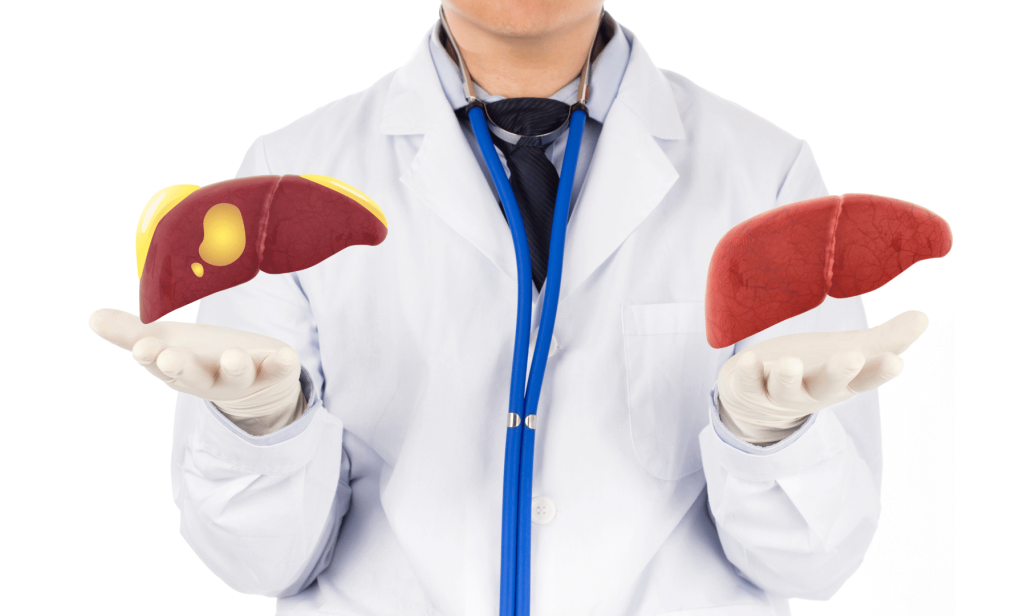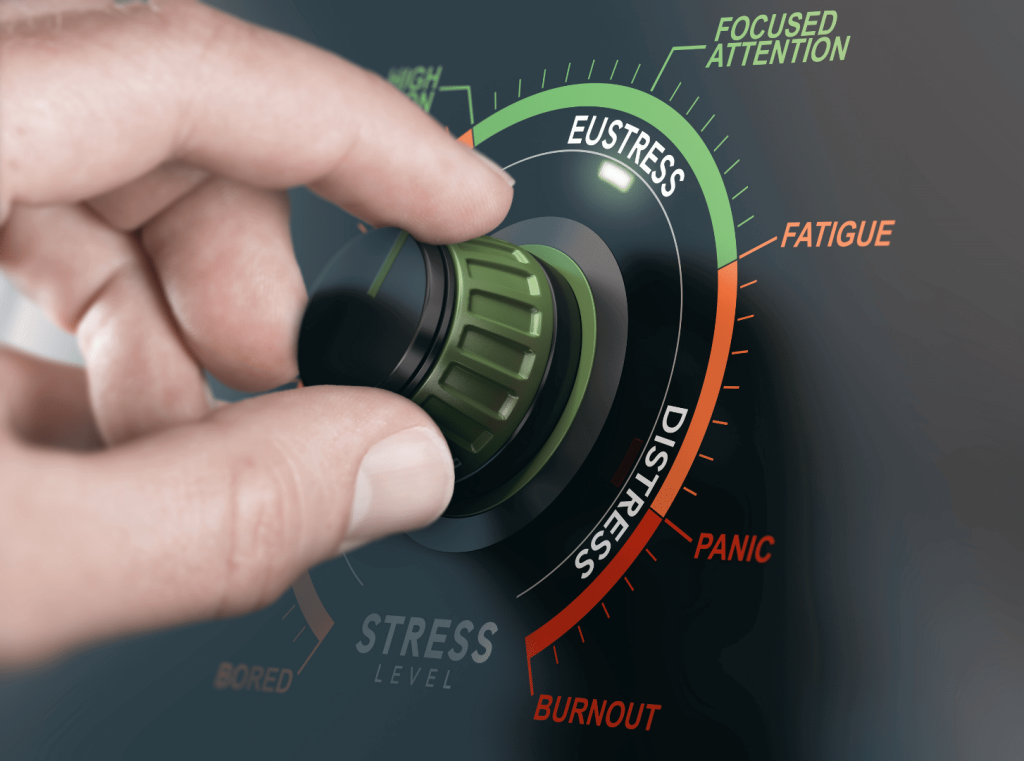
What’s In Your Belly Fat?


What’s In Your Belly Fat?
In this article, you will learn more about the contributing factors to belly fat and some strategies to reduce or eliminate it.
The fat in your belly can comprise of two types:
- Visceral fat is the fat found around your organs behind your abdominal wall.
- Subcutaneous fat is the fat found just under the skin and is soft to the touch.
Visceral fat is the most concerning one. It can wrap around your liver, intestines, and stomach and is associated with a higher risk for insulin resistance, high blood pressure, and inflammation.
High amounts of subcutaneous fat, while less dangerous, should not be ignored. The amount of subcutaneous fat tends to correlate with the amount of problematic visceral fat you have.

What Causes Belly Fat?
1. Poor Blood Sugar Control
Your body turns the carbohydrates that you eat into glucose. As your glucose levels increase, your pancreas produces the hormone insulin to help regulate your blood sugar levels. Insulin does this by moving glucose from your blood to your cells, where they either use the glucose as energy or store it as fat for later.
A diet high in refined carbohydrates keeps your pancreas pumping insulin into your system to regulate your blood sugar levels. Over time, your cells can become less sensitive to insulin, and you end up with insulin resistance and elevated blood glucose. If you have more glucose in your cells than your body needs for energy, your cells will convert the rest into fat.
In a study of 22 healthy women, researchers compared the fat distribution of those with normal glucose tolerance to those with some insulin resistance. Women with more insulin resistance had more abdominal fat. Therefore, fat storage due to poor blood sugar control is most likely to be stored in your belly.
The same trend in body fat storage and insulin resistance is also true for males and across multiple ethnic backgrounds.
2. Fatty Liver

Your liver plays a central role in fat metabolism by breaking down fats and producing energy. When you eat excess calories, your liver must break down larger amounts of fat, but it has its limits. When your liver can’t regulate fat metabolism, it can cause fat to build up in the liver, leading to what’s known as non-alcoholic fatty liver.
A meta-analysis of 24 studies examined the relationship between fatty liver, waist circumference, and belly fat. Regardless of the participant’s age, gender, and ethnicity, those with higher liver fat content had larger waist circumferences, indicating more belly fat.
Additional imaging used in the studies distinguished between visceral and subcutaneous fat. Those with higher liver fat content had higher visceral fat levels, but not subcutaneous fat. Therefore, the liver plays a major role in controlling your belly fat.
3. Chronic Stress/High Cortisol
When you experience stress, the fight or flight response is your body’s primary response. As a part of this response, your adrenal glands release cortisol to help you stay on high alert. In the past, threats were short-lived, and the stress response would end. The modern world, however, is filled with constant stressors. From heavy traffic to job pressure to loneliness, stress is everywhere.
Both men and women with higher cortisol exposure due to stress have greater amounts of abdominal fat.
A study of 41 women compared waist-to-hip ratios (as a measure of belly fat) to their cortisol levels in response to stressors. Participants with high waist-to-hip ratios released more cortisol in response to stressors than participants with low waist-to-hip ratios. Those with higher waist-to-hip ratios also showed poorer stress-coping skills. Therefore, how you respond to stress can result in higher belly fat.
Chronic stress can also lead you to turn to food for comfort, and those foods are often high in fat and sugar. We’ve already discussed problems with what those diets can do for blood sugar control and fatty liver. The added calories don’t work in your favor either.
4. Menopause Or Perimenopause
For women, estrogen tells the body to start storing fat on the hips and thighs beginning at puberty. This fat is the less harmful fat under the skin (subcutaneous). However, significant hormonal changes occur again in menopause, and this changes the way the body stores fat.
When women approach menopause, estrogen levels begin to vary and then drop. Because estrogen is responsible for glucose and fat metabolism, when estrogen drops, your body can’t break down glucose or fat as effectively. This drop can lead to weight gain.
While the possibility of weight gain is different for all women, it’s more likely to occur in the midsection. A 4-year study of 103 healthy premenopausal women examined the changes in body fat as some women transitioned through menopause. While all women gained subcutaneous fat over time, only those who became menopausal experienced an increase in visceral fat.
Eating an unhealthy diet and having an unhealthy and sedentary lifestyle can contribute to all the factors above. Making healthy dietary changes and increasing your physical activity is a great step toward reducing belly fat. Keep reading for tips on how to lose your belly fat.
How To Lose Belly Fat:
1. Build Muscles By Resistance Training With Functional Exercises And Eating Enough Proteins (0.7 – 1.2 G/Lb Body Weight Per Day)

Muscles help take up sugar from your blood, so they’re great for improving blood sugar control and overall metabolic health. Also, building muscle takes a lot of calories, so it’s a great strategy for reducing body fat.
While you can’t tell your body where to lose weight, you can instead:
- Fix the foot causes of belly fat
- Focus on building muscle overall and in your abdominals
Even if you do build abdominal muscles, you won’t be able to see them if you’ve got extra fat covering them. A combination of resistance training and cardio is the best way to go.
A meta-analysis examined the effects of resistance training, aerobic training, and combining the two on belly fat. Compared to a control group, all types of exercise effectively reduced belly fat. However, doing both resistance and aerobic training was more effective at reducing subcutaneous abdominal fat than just performing either alone.
The time of day you work out can also influence the loss of belly fat. A recent study of 31 women and 27 men examined the health effects of exercise training in the morning versus the evening. The results were different for men and women:
- For men, evening exercise increased their fat burning and lowered blood pressure.
- For women, morning exercise reduced belly fat and blood pressure while evening exercise enhanced muscle performance.
Ensuring that you are consuming enough quality protein not only helps you build muscle mass and retain muscle mass during weight loss, but it can also boost your body’s ability to lose that belly fat.
A study of 27 individuals examined the relationship between the quality and distribution of protein consumption and belly fat. High-quality proteins are those that are complete proteins and include all nine essential amino acids. Those who consumed higher-quality protein throughout the day had less belly fat.
You should aim for around 0.7 – 1.2 g/lb (1.5 – 3.3 g/kg) of protein daily. This is greater than the Recommended Daily Allowance (RDA), but there’s a reason for that. RDA is only enough to prevent serious protein deficiencies and should not be considered optimal intake. Check out this blog post for more on optimal protein intake.
2. Improve Your Blood Sugar Control With Diet, Exercise, And Supplements
You don’t have to have metabolic syndrome or diabetes to have trouble with blood sugar. In fact, food cravings, mood swings, and belly fat could be the first signs of poor blood sugar control. These could happen decades or years before your blood tests go out of range.
To stabilize your blood sugar, consider a slow-carb diet and postprandial-targeting diet along with a blood sugar support supplement. Together, these will improve your body’s ability to stabilize your blood sugar levels. You will also be more insulin sensitive and find it easier to lose weight, especially from the midsection.
If you have excess blood sugar, Berberine Breakthrough nudges the glucose in the right direction for your muscles to use as energy rather than going to your fat cells to be stored as fat. This means you’ll have more energy for muscle gain rather than experiencing fat gain.
Berberine Breakthrough also improves mitochondrial uncoupling. Mitochondria are the energy factories of your cells. When uncoupling occurs, you burn more calories as heat which can increase overall weight loss.
Magnesium supplementation can also help support healthy blood sugar levels. Magnesium is critical to glucose metabolism and insulin secretion from the pancreas.
A 30-year study of 5,115 young adults monitored participants’ magnesium intake and compared that to their belly fat and fasting insulin levels. Those who maintained a higher magnesium intake had less belly fat and lower insulin levels. Therefore, not only could magnesium help support insulin sensitivity, but it could also reduce belly fat.
Our Magnesium Breakthrough is an excellent way to ensure you get what your body needs through all seven forms of magnesium. In addition to containing the right type of magnesium for lowering insulin resistance and controlling your blood sugar levels, it contains the right magnesium necessary for multiple bodily functions.
3. Manage Stress

We discussed how detrimental stress can be for holding on to belly fat. Prioritize managing stress to promote belly fat loss. Some science-backed strategies to reduce your stress include:
- Yoga
- Mindfulness
- Enjoying some music
- Regular exercise
- Visiting nature
- Having a cup of tea
We already mentioned magnesium as a way to help control your blood sugar response. It can also help mitigate many negative health effects from stress. Research tells us that when you are stressed, your magnesium levels drop. And low magnesium levels contribute to exaggerated physiologic responses to stress. It’s a vicious cycle.
When you supplement with magnesium, you help prevent yourself from getting stuck in this cycle. When you manage your stress better, you reduce the amount of cortisol in your body and minimize belly fat gain.
In a meta-analysis of 28 studies, scientists examined the relationship between magnesium supplementation to belly fat. Participants that were considered obese based on a body mass index (BMI) greater than 30 kg/m decreased their waist circumference by an average of about 2 cm after taking regular magnesium supplements.
Magnesium Breakthrough to the rescue again. It supports both healthy blood sugar levels and stress response. Check out this blog post for more tips on combating stress.
4. For Women, Balance Hormones And Speak To Your Doctor About HRT (If Menopausal)
We’ve talked about a couple of hormones, cortisol and insulin, that can affect the amount of belly fat you carry. Specific to women, however, is estrogen. If your estrogen levels are imbalanced, you are more likely to experience weight gain. A blood, saliva, or urine test can help determine your estrogen and hormone balance.
When you go through menopause, your estrogen drops. But at the same time, it becomes more important to ensure that your body eliminates used up estrogen and hormone disruptors. These can build up in fat cells, making it harder to lose fat. They can also increase cancer risks.
Even if you’re in menopause, there is no way around creating a caloric deficit and balancing your blood sugar with food and exercise. Lifting weights becomes even more important to mitigate age-related loss in muscle and bone mass. However, that progress may come more slowly than when you were younger. At the same time, balancing your hormones can often make things easier.
Here are some steps to help balance hormones:
- Exercise. Exercising regularly, especially anaerobic exercise like HIIT workouts, can increase estrogen levels.
- Eating a high-fiber diet. High-fiber diets may decrease estrogen levels by reducing the amount you absorb and increasing the amount you excrete.
- Consuming brassica vegetables such as broccoli, cabbage, and cauliflower. Eating vegetables from this family can help modulate your estrogen levels by increasing estrogen metabolism, or the rate at which your body breaks down used up estrogen.
- Avoiding endocrine disruptors. These chemicals are known to interfere with your natural hormones. Some examples include plastics made with BPA, organophosphate insecticides, and phthalates.
- Eating more plants and less meat. Eating a plant-based diet can help you avoid unnecessary hormone exposure through animal products and lead to lower estrogen levels.
- Increasing or avoiding phytoestrogen consumption depending on your needs. Phytoestrogens have estrogen-like properties and can affect estrogen levels in your body. Some examples include legumes, soy products, nuts, seeds, grains, and fruits.
- Avoiding excessive alcohol consumption. Alcohol can change the way your body metabolizes estrogen. Estrogen levels are higher in women who drink alcohol than those who don’t.
- Taking probiotics. Lactobacillus plantarum, in particular, can change the metabolites of your gut microbiota and increase circulating estrogen levels. You can find a great source of this probiotic in Probiotic Breakthrough.
If you are menopausal, you may want to consider speaking to your doctor about hormone replacement therapy (HRT). With hormone replacement therapy, you take medications to balance those hormones that become imbalanced during menopause, like estrogen and progesterone.
In a study of 61 postmenopausal women, 35 received HRT, and 26 served as the control group. The women who received HRT had improved belly fat, while belly fat increased in the control group overall.
There are risks and benefits to HRT, and it’s not for everyone. Talk to your doctor to see if it may be the right option for you.
5. Lose Weight Gradually
While it’s tempting to go hard and lose weight quickly, it can backfire on you in the end. Weight regains often come back in belly fat.
A study of 42 individuals examined the effects of slow and rapid weight loss. While both slow and rapid weight loss groups experienced a reduction in waist circumference, there was even more of a reduction in the slow weight loss group. Therefore, slow weight loss over time is more effective in losing belly fat.
When you push your body too hard with high-intensity workouts and don’t give your body a chance to recover, you’re actually undermining your hard work to lose that belly fat.
A meta-analysis of 10 controlled studies examined the effects of high-intensity interval training (HIIT) workouts on cortisol levels. Cortisol levels rose after the HIIT workout, dropped below baseline levels, and finally returned back to baseline 24 hours following the workout.
Completing HIIT workouts regularly without giving your body a chance to recover could lead to elevated cortisol levels. We’ve already covered the negative effects of high cortisol levels on belly fat.
Instead, try balancing your workouts with low-intensity movements that won’t increase your cortisol levels. Include walks and light yoga in addition to HIIT and intense weight training. Check in with your oxygen uptake to ensure you’re staying at low intensity. Aim for around 40% maximal oxygen uptake (VO2max).
The Takeaway
There are many reasons for belly fat from hormones and stress to lifestyle choices. While there is no magic fix, there are steps you can take to decrease it over time with the right hormone management and caloric deficits, including:
- Eating a healthy blood sugar-friendly diet high in protein
- Building muscles through resistance training
- Managing your stress
- Adding lower-intensity movements throughout the day
- Work on balancing your hormones
- Consider working with a naturopathic doctor to test your hormones and work on them at a deeper level
Berberine Breakthrough and Magnesium Breakthrough are great companion supplements to support your overall health plans if you’d like to finally lose that belly fat sustainably.
References
- Elffers TW, de Mutsert R, Lamb HJ, et al. Body fat distribution, in particular visceral fat, is associated with cardiometabolic risk factors in obese women. PLoS One. 2017;12(9):e0185403. doi:10.1371/journal.pone.0185403
- Reang T, Goswami B, Sarkar S, Sengupta S, Bhattacharjee B. Role of body visceral fat in hypertension and dyslipidemia among the diabetic and nondiabetic ethnic population of Tripura—A comparative study. J Family Med Prim Care. 2020;9(6):2885. doi:10.4103/jfmpc.jfmpc_187_20
- Abraham TM, Pedley A, Massaro JM, Hoffmann U, Fox CS. Association between visceral and subcutaneous adipose depots and incident cardiovascular disease risk factors. Circulation. 2015;132(17):1639-1647. doi:10.1161/CIRCULATIONAHA.114.015000
- Carey DG, Jenkins AB, Campbell LV, Freund J, Chisholm DJ. Abdominal fat and insulin resistance in normal and overweight women: Direct measurements reveal a strong relationship in subjects at both low and high risk of NIDDM. Diabetes. 1996;45(5):633-638. doi:10.2337/diab.45.5.633
- Banerji MA, Faridi N, Atluri R, Chaiken RL, Lebovitz HE. Body composition, visceral fat, leptin, and insulin resistance in Asian Indian men. J Clin Endocrinol Metab. 1999;84(1):137-144. doi:10.1210/jcem.84.1.5371
- Banerji MA, Lebowitz J, Chaiken RL, Gordon D, Kral JG, Lebovitz HE. Relationship of visceral adipose tissue and glucose disposal is independent of sex in black NIDDM subjects. Am J Physiol. 1997;273(2 Pt 1):E425-32. doi:10.1152/ajpendo.1997.273.2.E425
- Jakobsen MU, Berentzen T, Sørensen TIA, Overvad K. Abdominal obesity and fatty liver. Epidemiol Rev. 2007;29(1):77-87. doi:10.1093/epirev/mxm002
- Epel EE, Moyer AE, Martin CD, et al. Stress-induced cortisol, mood, and fat distribution in men. Obes Res. 1999;7(1):9-15. doi:10.1002/j.1550-8528.1999.tb00385.x
- Moyer AE, Rodin J, Grilo CM, Cummings N, Larson LM, Rebuffé-Scrive M. Stress-induced cortisol response and fat distribution in women. Obes Res. 1994;2(3):255-262. doi:10.1002/j.1550-8528.1994.tb00055.x
- Garg N, Wansink B, Inman JJ. The influence of incidental affect on consumers’ food intake. J Mark. 2007;71(1):194-206. doi:10.1509/jmkg.71.1.194
- Lizcano F, Guzmán G. Estrogen Deficiency and the Origin of Obesity during Menopause. Biomed Res Int. 2014;2014:757461. doi:10.1155/2014/757461
- Lovejoy JC, Champagne CM, de Jonge L, Xie H, Smith SR. Increased visceral fat and decreased energy expenditure during the menopausal transition. Int J Obes (Lond). 2008;32(6):949-958. doi:10.1038/ijo.2008.25
- Yarizadeh H, Eftekhar R, Anjom-Shoae J, Speakman JR, Djafarian K. The effect of aerobic and resistance training and combined exercise modalities on subcutaneous abdominal fat: A systematic review and meta-analysis of randomized clinical trials. Adv Nutr. 2021;12(1):179-196. doi:10.1093/advances/nmaa090
- Arciero PJ, Ives SJ, Mohr AE, et al. Morning exercise reduces abdominal fat and blood pressure in women; Evening exercise increases muscular performance in women and lowers blood pressure in men. Front Physiol. 2022;13:893783. doi:10.3389/fphys.2022.893783
- Loenneke JP, Wilson JM, Manninen AH, Wray ME, Barnes JT, Pujol TJ. Quality protein intake is inversely related with abdominal fat. Nutr Metab (Lond). 2012;9(1):5. doi:10.1186/1743-7075-9-5
- Demine S, Renard P, Arnould T. Mitochondrial uncoupling: A key controller of biological processes in physiology and diseases. Cells. 2019;8(8):795. doi:10.3390/cells8080795
- Lu L, Chen C, Yang K, et al. Magnesium intake is inversely associated with risk of obesity in a 30-year prospective follow-up study among American young adults. Eur J Nutr. 2020;59(8):3745-3753. doi:10.1007/s00394-020-02206-3
- Woodyard C. Exploring the therapeutic effects of yoga and its ability to increase quality of life. Int J Yoga. 2011;4(2):49-54. doi:10.4103/0973-6131.85485
- Sharma M, Rush SE. Mindfulness-based stress reduction as a stress management intervention for healthy individuals: a systematic review: A systematic review. J Evid Based Complementary Altern Med. 2014;19(4):271-286. doi:10.1177/2156587214543143
- de Witte M, Spruit A, van Hooren S, Moonen X, Stams GJ. Effects of music interventions on stress-related outcomes: a systematic review and two meta-analyses. Health Psychol Rev. 2020;14(2):294-324. doi:10.1080/17437199.2019.1627897
- Elliott LD, Wilson OWA, Holland KE, Bopp M. Using exercise as a stress management technique during the COVID-19 pandemic: The differences between men and women in college. Int J Exerc Sci. 2021;14(5):1234-1246.
- Ewert A, Chang Y. Levels of nature and stress response. Behav Sci (Basel). 2018;8(5). doi:10.3390/bs8050049
- Steptoe A, Gibson EL, Vuononvirta R, et al. The effects of tea on psychophysiological stress responsivity and post-stress recovery: a randomised double-blind trial. Psychopharmacology (Berl). 2007;190(1):81-89. doi:10.1007/s00213-006-0573-2
- Cuciureanu MD, Vink R. Magnesium and stress. In: Magnesium in the Central Nervous System [Internet]. University of Adelaide Press; 2011.
- Rafiee M, Ghavami A, Rashidian A, Hadi A, Askari G. The effect of magnesium supplementation on anthropometric indices: a systematic review and dose-response meta-analysis of clinical trials. Br J Nutr. 2021;125(6):644-656. doi:10.1017/S0007114520003037
- Crandall DL, Busler DE, Novak TJ, Weber RV, Kral JG. Identification of estrogen receptor beta RNA in human breast and abdominal subcutaneous adipose tissue. Biochem Biophys Res Commun. 1998;248(3):523-526. doi:10.1006/bbrc.1998.8997
- Paterni I, Granchi C, Minutolo F. Risks and benefits related to alimentary exposure to xenoestrogens. Crit Rev Food Sci Nutr. 2017;57(16):3384-3404. doi:10.1080/10408398.2015.1126547
- Razzak ZA, Khan AA, Farooqui SI. Effect of aerobic and anaerobic exercise on estrogen level, fat mass, and muscle mass among postmenopausal osteoporotic females. Int J Health Sci (Qassim). 2019;13(4):10-16.
- Gaskins AJ, Mumford SL, Zhang C, et al. Effect of daily fiber intake on reproductive function: the BioCycle Study. Am J Clin Nutr. 2009;90(4):1061-1069. doi:10.3945/ajcn.2009.27990
- Fowke JH, Longcope C, Hebert JR. Brassica vegetable consumption shifts estrogen metabolism in healthy postmenopausal Women1. Cancer Epidemiol Biomarkers Prev. 2000;9(8):773-779. Accessed November 12, 2022. https://aacrjournals.org/cebp/article/9/8/773/179852/Brassica-Vegetable-Consumption-Shifts-Estrogen
- Frye CA, Bo E, Calamandrei G, et al. Endocrine disrupters: a review of some sources, effects, and mechanisms of actions on behaviour and neuroendocrine systems: EDCs-sources, effects & mechanisms. J Neuroendocrinol. 2012;24(1):144-159. doi:10.1111/j.1365-2826.2011.02229.x
- Harmon BE, Morimoto Y, Beckford F, Franke AA, Stanczyk FZ, Maskarinec G. Oestrogen levels in serum and urine of premenopausal women eating low and high amounts of meat. Public Health Nutr. 2014;17(9):2087-2093. doi:10.1017/S1368980013002553
- Godos J, Bergante S, Satriano A, Pluchinotta FR, Marranzano M. Dietary phytoestrogen intake is inversely associated with hypertension in a cohort of adults living in the Mediterranean area. Molecules. 2018;23(2):368. doi:10.3390/molecules23020368
- Endogenous Hormones and Breast Cancer Collaborative Group, Key TJ, Appleby PN, et al. Circulating sex hormones and breast cancer risk factors in postmenopausal women: reanalysis of 13 studies. Br J Cancer. 2011;105(5):709-722. doi:10.1038/bjc.2011.254
- Chen Q, Wang B, Wang S, et al. Modulation of the gut Microbiota structure with probiotics and isoflavone alleviates metabolic disorder in ovariectomized mice. Nutrients. 2021;13(6):1793. doi:10.3390/nu13061793
- Sumino H, Ichikawa S, Yoshida A, et al. Effects of hormone replacement therapy on weight, abdominal fat distribution, and lipid levels in Japanese postmenopausal women. Int J Obes Relat Metab Disord. 2003;27(9):1044-1051. doi:10.1038/sj.ijo.0802371
- Ashtary-Larky D, Ghanavati M, Lamuchi-Deli N, et al. Rapid weight loss vs. Slow weight loss: Which is more effective on body composition and metabolic risk factors? Int J Endocrinol Metab. 2017;15(3):e13249. doi:10.5812/ijem.13249
- Dote-Montero M, Carneiro-Barrera A, Martinez-Vizcaino V, Ruiz JR, Amaro-Gahete FJ. Acute effect of HIIT on testosterone and cortisol levels in healthy individuals: A systematic review and meta-analysis. Scand J Med Sci Sports. 2021;31(9):1722-1744. doi:10.1111/sms.13999
- Hill EE, Zack E, Battaglini C, Viru M, Viru A, Hackney AC. Exercise and circulating cortisol levels: the intensity threshold effect. J Endocrinol Invest. 2008;31(7):587-591. doi:10.1007/BF03345606
